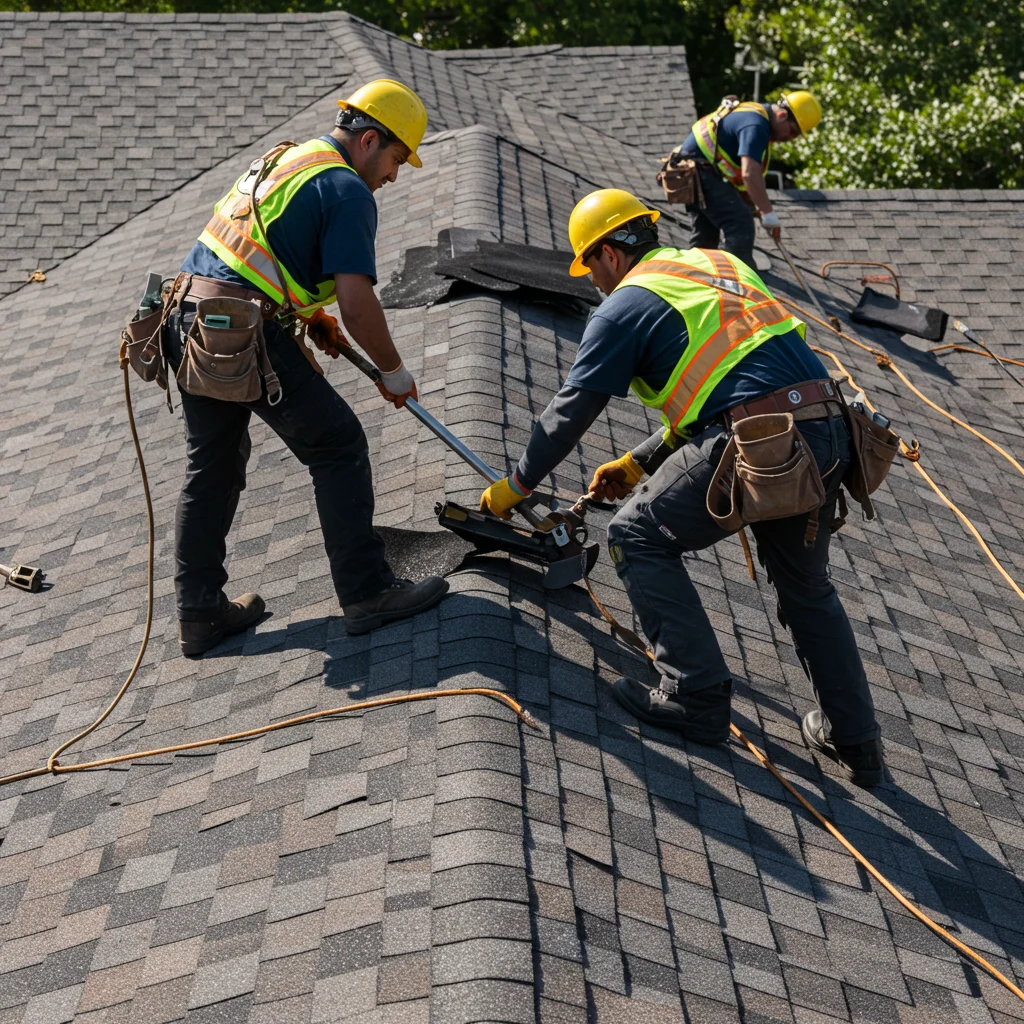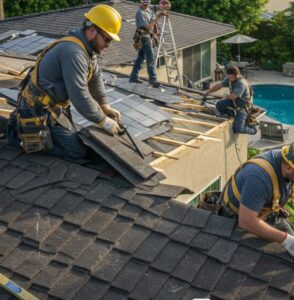What to Check After Roofers Installed New Roof
A Simple Guide to Make Sure Your Roof is Safe, Strong, and Done Right

1. Look at Your Roof’s Appearance
When your new roof is finished, the first step is a simple one: take a good look. Walk around your house and check the roof from every side. The color of the shingles should be the same all over. There should be no bumps, dips, or odd-looking spots. The shingle lines should be straight and even. Also, look at how the roof blends with skylights or chimneys. Everything should look neat and sealed. This check helps you catch big mistakes fast.
2. Check Shingle Alignment and Quality
Shingles are a big part of roof protection. If they aren’t installed right, your roof won’t last. Check for missing shingles, cracked shingles, or shingles that are crooked or curling. They should lay flat and fit in a uniform pattern. Also, look at roof edges and valleys where two slopes meet. Shingles should cover these spots fully and lead water toward the gutters, not under the roof. A strong shingle setup means fewer repairs later.
3. Inspect Flashing and Sealants for Water Protection
Flashing is metal that seals spots where the roof meets things like chimneys, vents, or skylights. If flashing is loose or missing, water can get into your house. Look closely at all the roof’s connection points. Check that sealants (caulking) are smooth and there are no exposed nails or gaps. These tiny details make a big difference during storms. If flashing or sealants are off, call your roofer to fix it right away.
Contents
- Look at Your Roof’s Appearance
- Check Shingle Alignment and Quality
- Inspect Flashing and Sealants for Water Protection
- Review Roof Ventilation and Attic Airflow
- Make Sure Gutters and Downspouts Are Working Right
- Confirm Cleanup and Worksite Safety
- Gather All Paperwork and Warranty Details
- Plan Maintenance and Professional Inspections ?
4. Review Roof Ventilation and Attic Airflow
A roof isn’t just what you see on top. Attic ventilation matters a lot, especially in summer and winter. Good airflow prevents moisture buildup, mold, and warped wood. Check for soffit vents and ridge vents. Go into your attic and make sure air moves freely. The attic should not feel damp or too hot. This will help your shingles last longer and keep your home energy efficient.
5. Make Sure Gutters and Downspouts Are Working Right
Your roof moves water to the ground through gutters and downspouts. After the roof job, make sure these are clean and properly installed. They should have the right pitch and no clogs. During the next rain, see if water drains smoothly. If you see pooling water or overflow, that’s a sign something’s wrong. A working drainage system prevents roof leaks, basement flooding, and ice dams in winter.
6. Confirm Cleanup and Worksite Safety
Once the roof is installed, the crew should leave the worksite clean. Look around for nails, shingle pieces, or other roofing debris. Even small items can hurt your feet or damage your lawn. Make sure all tools and materials are gone and that your landscaping wasn’t damaged. A clean worksite shows the roofer cares about doing the job right from start to finish.
7. Gather All Paperwork and Warranty Details
Roof work isn’t just on the roof — it’s also in the paperwork. Ask for a copy of your roofing warranties, including both the manufacturer warranty (materials) and workmanship warranty (installation). Most require you to register them within 30 to 90 days. You should also get all product specifications, a final invoice, and details on what kind of underlayment, shingles, and flashing were used. Store all this in a safe place — it helps if you ever file an insurance claim or sell your home.
8. Plan Maintenance and Professional Inspections
Even a brand-new roof needs care. Follow these roof maintenance tips:
- Clean gutters often
- Trim tree branches
- Look for signs of roof leaks
- Do a visual roof inspection after storms
- Schedule a professional roof inspection every year
Early care prevents costly roof failure and helps you get the most out of your new roof. Always fix small problems fast — they get bigger over time.
Final Thoughts
A new roof is a big step in keeping your home safe. By checking these 8 areas, you can be sure your roof is strong, neat, and built to last. If something doesn’t look right, talk to your roofing contractor. Protecting your roof means protecting your entire home.

What to Check After Roofers Installed New Roof
Premium Roofing Solutions Blog What to Check After Roofers Installed New Roof A Simple Guide to Make Sure Your Roof is Safe, Strong, and Done
